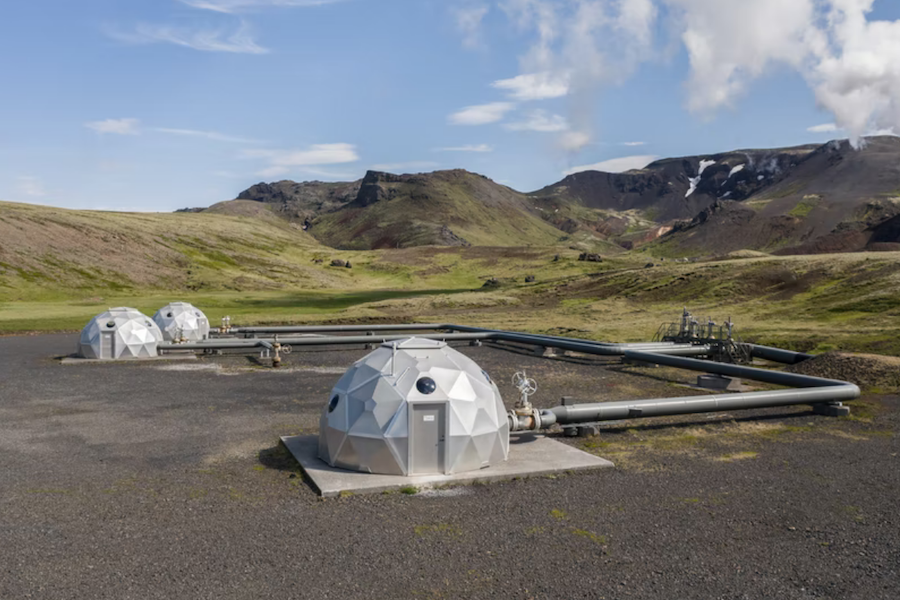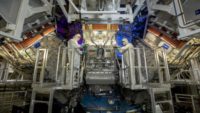The White House is gearing up to spend $12.1 billion under the federal infrastructure law to develop and deploy carbon capture technologies and build carbon dioxide transport pipelines. The Council on Environmental Quality seeks comments by March 18 on its proposal to deploy carbon capture, utilization and sequestration (CCUS) projects, it said in a Feb. 16 Federal Register notice, which includes guidance to help US agencies regulate and permit them.
The U.S. will likely need to capture, transport and permanently sequester significant amounts of CO2 to meet the current US goal of net-zero emissions by 2050, the notice said, but its first priority to address climate change is to avoid emissions.
CCUS includes a set of technologies that remove CO2 from emissions of point sources or from the atmosphere, transport or compress it, and inject it into underground storage areas. The approach also includes treating CO2 for use in industrial processes or as feedstock for commercial products.
The infrastructure law allots $3.5 billion for carbon capture demonstration projects, $2.5 billion for carbon storage projects and $3.5 billion for regional carbon capture and storage hubs.
More Pipelines Called For
Carbon dioxide pipelines and permanent sequestration are critical to future nationwide CCUS deployment, the White House notice said. “Extensive analysis identifies priority pathways and necessary pipeline infrastructure required to achieve CCUS and permanent sequestration at a climate-relevant scale across all industries,” it said.
The Infrastructure Act established a $2.1 billion program that provides flexible federal loans and grants for pipelines. The program would finance up to 80% of the costs of approved projects—including planning, permitting, design work, construction and technical consultant costs, law firm Holland & Hart said in an analysis.
“With industries moving quickly to adopt and deploy carbon capture technologies, federal agencies can play a key role in ensuring that projects are done right and in a way that reflects the needs and inputs of local communities,” Brenda Mallory, chair of the Council on Environmental Quality, said in a statement.
Capturing carbon and storing it has critics among community advocates and some environmental groups such as the Sierra Club, which say the approach gives cover for continued use of fossil fuels. In a December report, the US Government Accountability Office said implementing CCUS demonstration projects has so far “proven to be a challenge.” DOE spent about $1.1 billion to demonstrate 11 large-scale projects at coal plants and industrial plants to accelerate the commercial deployment of the technology. “The demonstrations ended with three of 11 projects being built,” GAO said.
Carbon capture critics used the GAO report as evidence that the technologies should not be pursued, but the Carbon Capture Coalition argues that the analysis actually “leads to a different conclusion.”
According to that group, “the report concludes that DOE investments in commercial demonstration of carbon capture and storage at industrial facilities were highly successful,” the group said. It added that lack of funding and federal policy support were barriers to successful projects at coal-fired power plants. GAO’s report validates important successes and highlights opportunities to improve management and oversight to ensure that projects are deployed to meet climate goals, the coalition said.
The National Wildlife Federation supports CCUS technologies, saying they can be a helpful in the energy transition, “if done right.”
$2M DOE Boost to Rio Tinto Test
Meanwhile, the US Energy Dept. has awarded $2 billion to a team led by mining giant Rio Tinto and joint venture partner Talon Metals Corp. to explore carbon storage technology at the Tamarack nickel, copper and cobalt project in central Minnesota.
They will look at new approaches in carbon mineralization technology to safely and permanently store carbon as rock. Rio Tinto will contribute $4 million for the three-year project, the company said. Carbon mineralization uses natural chemical reactions to convert captured carbon dioxide into rock and store it underground.
Carbfix, also a partner in the research, is using the technology in large scale in Iceland.
CarbonCapture Inc., a California startup that specializes in extracting CO2 from the atmosphere, also supports the mine site project. Its units, designed to fit on the bed of a flatbed truck, will each capture 100 tons of CO2 per year, using an absorbent mineral called zeolites in a renewable energy-powered Direct Air Capture (DAC) system.
CarbonCapture will begin feasibility studies later this year for the pilot project near Duluth, Minn.
The work will leverage knowledge gained from Pacific Northwest Laboratory's Wallula basalt carbon storage pilot project in Washington state to develop the carbon storage strategies, Todd Schaef, the lab’s CO2 subsurface sequestration expert, said in a statement.







Post a comment to this article
Report Abusive Comment